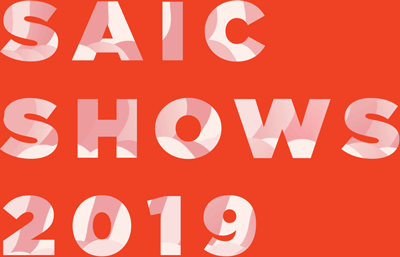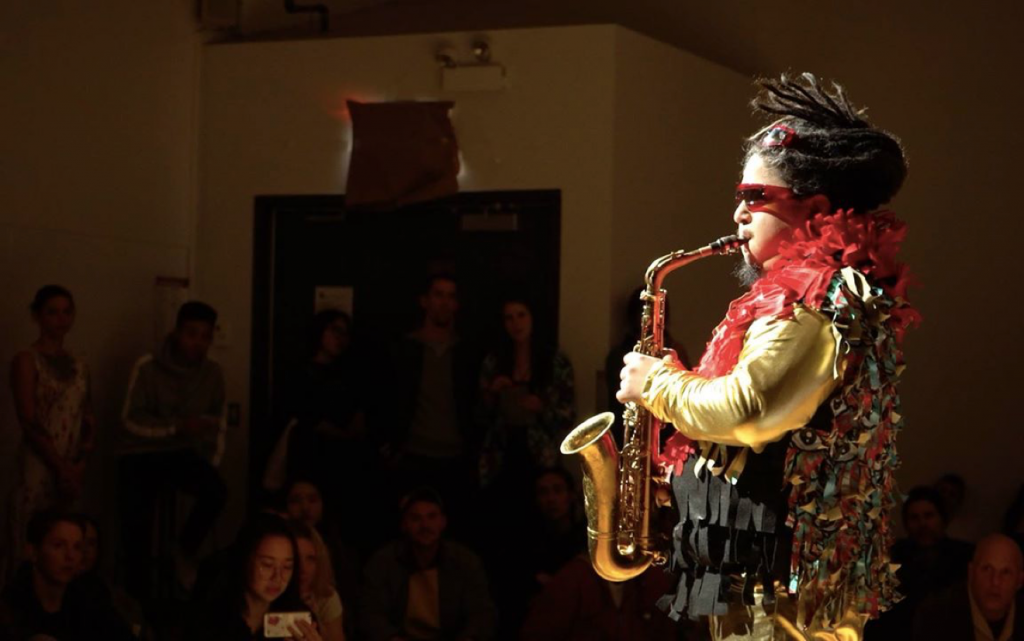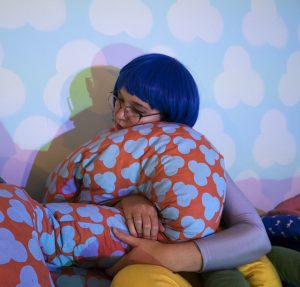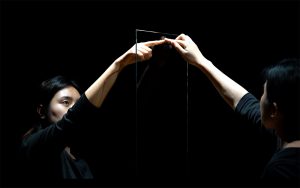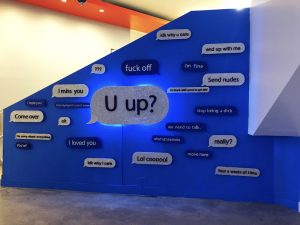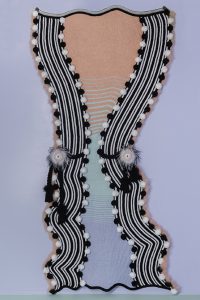Joshua M G McCormick was born in Cali, Colombia in 1986 He currently works out of and resides in Chicago, Illinois McCormick is an interdisciplinary artist with a focus in ceramic made art objects which he activates through different iterations of performance McCormick’s primary vessel for displaying his work is performance Each performance is articulated with different facets of his practice from costume design to two dimensionally drawn environments he creates to perform with his ceramic sculptures McCormick works in close proximity to a fictitious collaborator and alter-ego or as McCormick puts it, “Constructed Character” named Moises Imbatchi Together they are the architects of a phantasmagorical world where time travel is possible and performances that are seemingly unrelated connect as windows or vignettes to an archive of time travel experiments In his artist statement McCormick says in relation to his time travel experiments, “How can ancestral violence or success prepare
2871 N Kimball Ave, 2nd “Am I Chinese? Am I Black? Am I Mexican? What am I?” These are questions I asked my mother as a child. Whether I am performing as Moises Imbatchi, a constructed character I have developed, or Joshua M. G. McCormick, I am fusing my art practice, developed here in the United States, with my personal myth culture and heritage that began as an adopted Colombian child raised in Ohio. I am not attempting to perform my Colombian identity, and what little I know about where I was born. Instead, I am embodying an alternate persona that has always existed in my imagination and is a point of reference as I perform daily social interactions as a transcultural person of color.
Currently I am working on a series of performances in reflection to the colonized body. I have begun to unpack my experience being taken from Colombia as possibly one of the warmest, loving forms of colonization. Through my exploration of the text Manifesto Antropófago (by poet Oswald de Andrade, Brazil, 1928) and its themes of Cultural Cannibalism I navigate and justify cultural appropriation to preserve my right to heritage that has been erased. I grab onto anything culturally that reflects my heart as both a person and an artist.
For example, I have re-enacted Ushio Shinohara’s Action Painting, as a meditation on my childhood appropriation of Japanese culture, while paying homage to his radical appropriation to other American Pop artists. Ninja Turtles, Three Ninjas, Surf Ninjas and the Karate Kid helped me identify with other boys but also helped me connect with a subculture that was the first I called my own.
In my thesis project, The Time Machine Collaborative, I am addressing similar themes and re-contextualizing history. The term ‘primitive’ invaded western vernacular through so-called world history and in art history with so-called ‘masters’ Gauguin, Van Gogh, and others. The time machine presupposes a lost technology far more advanced than any of the industrial revolution to today, where the so-called ‘primitive’ ancient civilizations invert a power structure and sit on a plane of spacetime all its own. The Time Machine asserts terms, conditions and an understanding of this world that have been historically censored and ignored. Primitive societies had high cultures of math, science astrology, art, and many others. This presentation of mythological technology uses humor as a catalyst to provoke conversation that may not have otherwise occurred.
How can ancestral violence or success prepare me for my future? The Time Travel Collaborative hosts group and individual time travel sessions, revisiting historical past events through alternative representations of history. These sessions allow people to revisit or relive their own timelines, traumas, and triumphs and project their reflections into the future.
